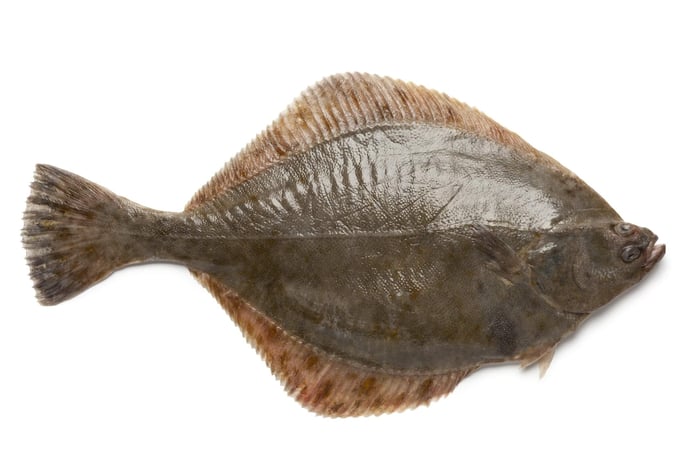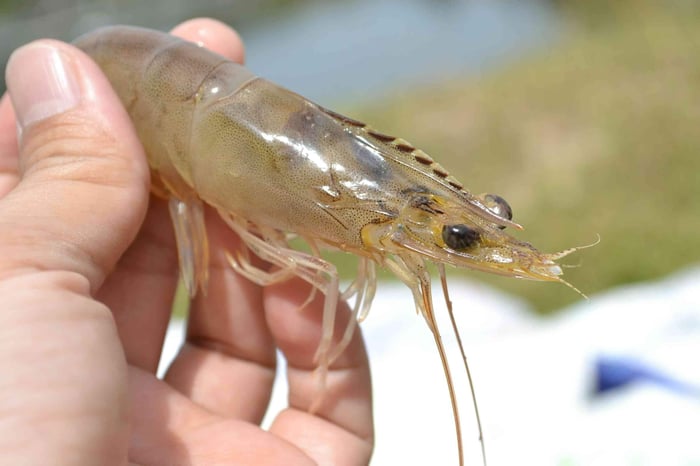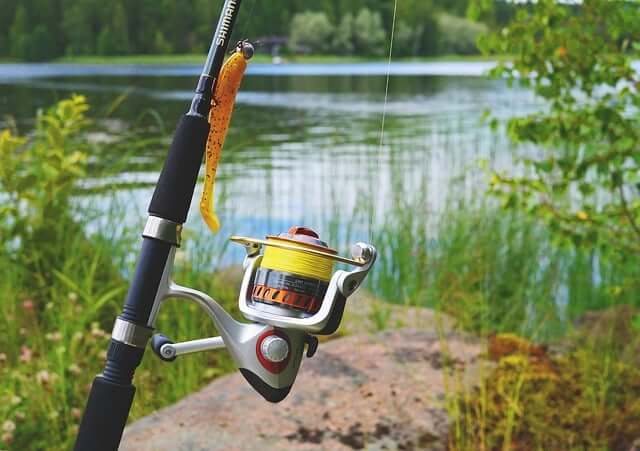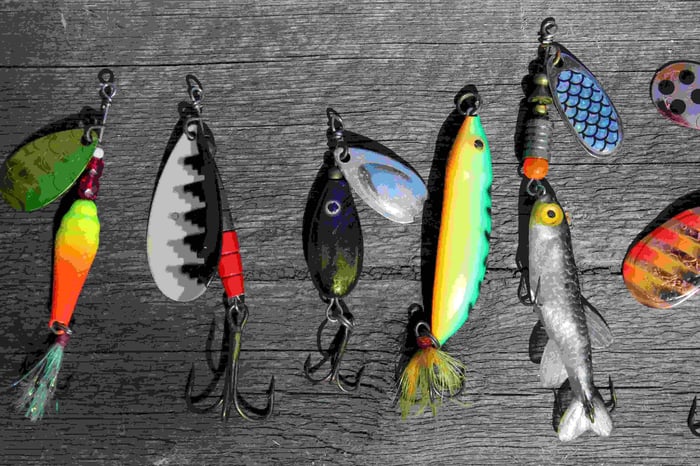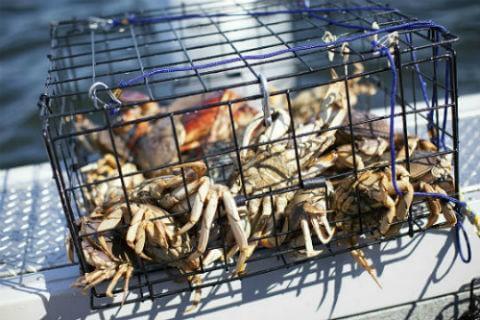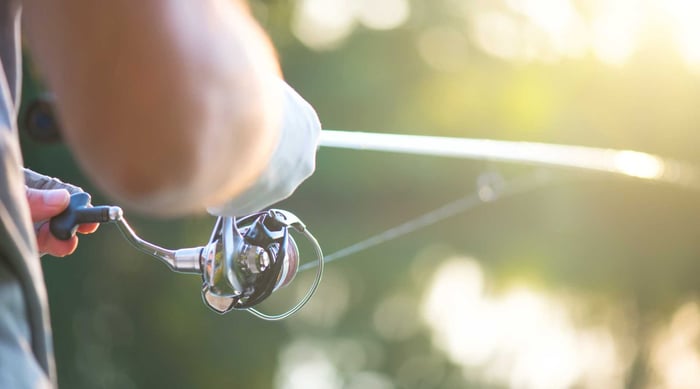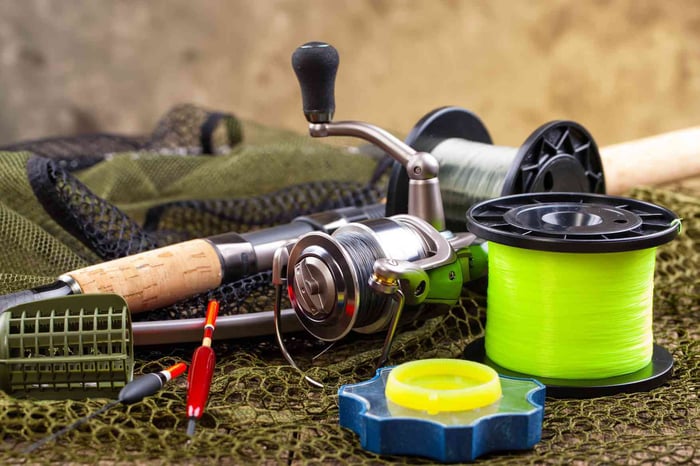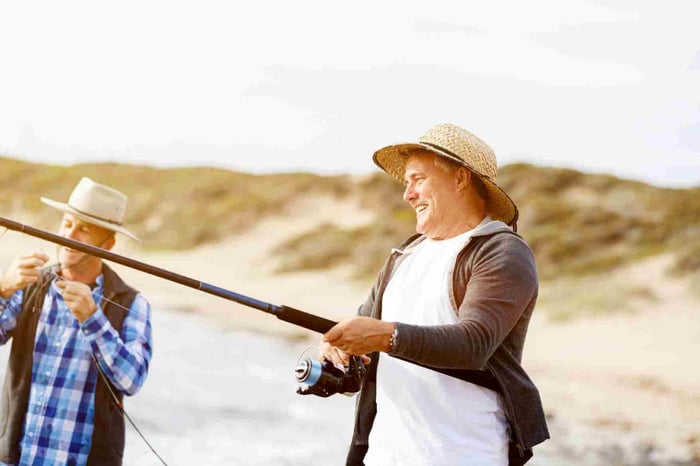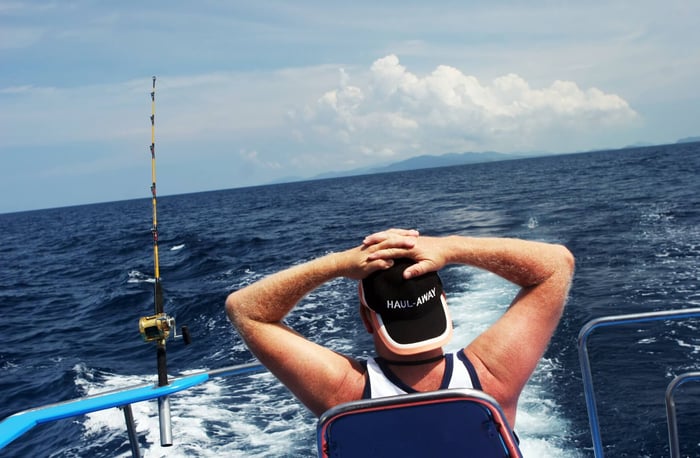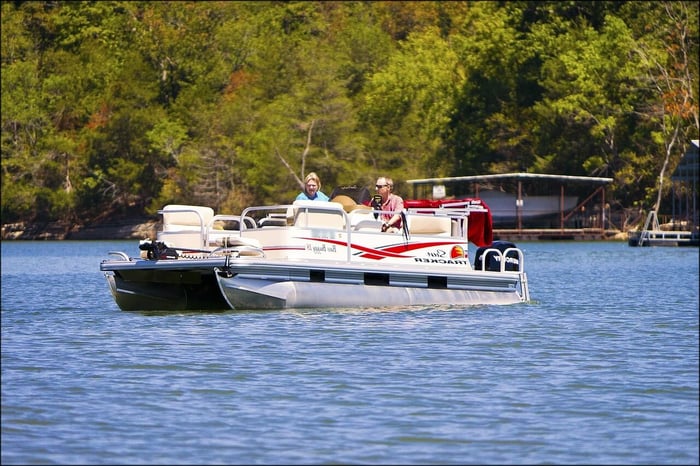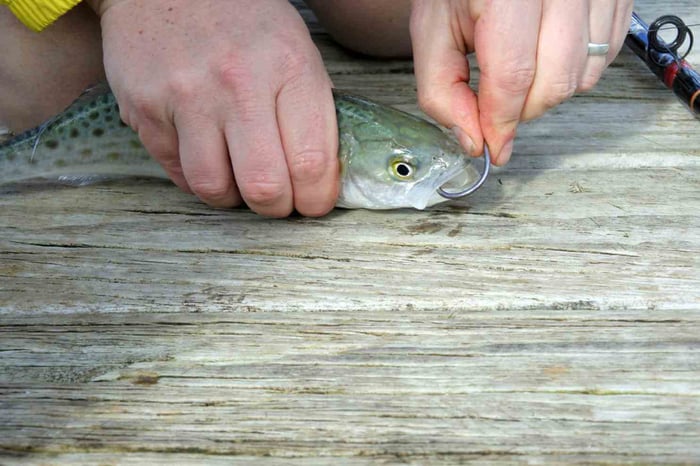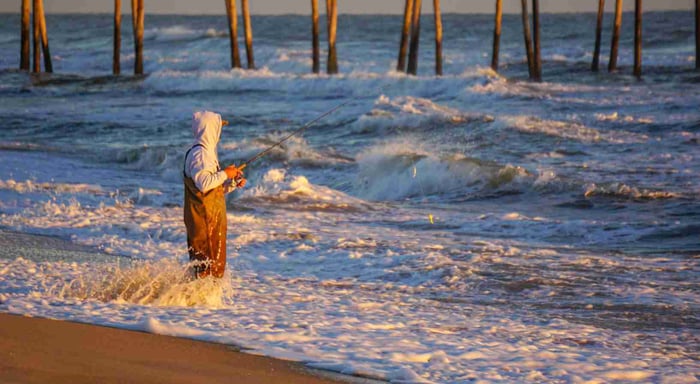Table of Contents
 Flounder have a knack for deceiving anglers.
Flounder have a knack for deceiving anglers.
How, so? Well, I say that because, for instance, they remain lying flat on the bottom, camouflaged in the sand or mud.
So, what happens is you can walk right over them without ever having a suspicion they are there.
They are ambush hunters. They do not chase. They wait.
When a baitfish or shrimp drifts too close, they attack swiftly and swallow with enough force.
That ambush tactic is why live bait is so effective.
A kicking minnow, a flashing mullet, or a twitching shrimp sends the "signals."
The smell and movement tell the flounder that this is a natural meal. It's just so effective.
But actually, artificial lures can trick them as well.
It's just that nothing compares to a live bait that is moving on its own. Flounders just love them, generally. They can't resist them.
The trick, however, is in how you rig that bait.
A live mullet rigged incorrectly dies instantly or fails to bring in the desired area of the water column.
A shrimp swimming around in circles is a waste of time.
Rigging is so much MORE than just hooks and sinkers. I think we can all agree with that.
Rigging is about keeping bait alive, allowing it to swim naturally and behave as it would in its natural habitat.
And of course, to ensure it drifts by the strike zone where flounder lie in wait.
In this article, we will walk you through the rigs that provide live bait its best chance. You will learn when to use them, how to rig them, and a few tricks that can convert a missed bite into a fish in the cooler.
Flounder Feeding Habits
Flounder are ambush feeders. That's a good note to take.
• They hide near the bottom.
They wait for an unsuspecting bait fish, shrimp, or crab to swim by.
With their eyes at the top of their head, they can see a lot.
This includes observing bait fish, shrimp, or crabs swim past in the current.
With just a swift dash, the flounder strikes with force.
That is how most fishermen explain the "thump" you feel in the tip of the rod.
• There are no random drifters.
They occupy places where food is funneled.
Drop-offs, sandy flats, jetty edges, and channel mouths are all turf.
An outgoing tide sweeps natural bait to them.
And that current sets the table.
If you are eyeing flounder in the Chesapeake Bay or along the Atlantic Ocean, you will find them stacked on edges where bait gets washed.
• They live on what is available.
Mud minnows, finger mullet, shrimp, and small crabs all draw flounder in.
Winter flounder inshore tend to key more on clams and worms.
Summer fish rely more on minnows and shrimp.
Most flounder consume whatever they can because they are opportunistic feeders.
That's where placement is more important than sheer power.
A general-purpose rig, such as the Carolina rig or a fish finder rig, allows bait to swim in the strike zone.
They do so without scaring off the fish. So, it works great.
The "correct" sinker weight keeps you near the bottom without being buried.
Great presentation wins in bottom fishing.
Simply place the bait in areas where flounder are known to feed.
Doing so will help you catch more fish.
Live Baits for Flounder
Every inshore angler is aware that the best live bait rigs for flounder are only as good as what you attach to them. I mean, it makes sense, right?
A naturally kicking live minnow or shrimp will outcatch artificial lures most days.
That life and movement are what attract fish. Plus, they keep them engaged.
1. Mud Minnows
Mud minnows are a preferred choice in tidal creeks and grass flats.
They are easy to catch with a cast net and extremely hardy.
They remain alive on a hook for a very long time.
The mummichog is the same.
Both are shallow water-loving species, so they are natural bait that flounder encounter daily.
2. Finger Mullet
Finger mullet are the ticket when fishing for flounder in the Atlantic or off sandy beaches.
They flash as they move and make a splash in surf, drift fishing rigs.
A live mullet properly rigged on a Kahle hook or jig head is killer for larger fluke.
3. Shrimps
Shrimp should be mentioned separately.
A live shrimp on a float or a basic bottom rig is difficult to surpass in hot summers.
It draws not just flounder, but striped bass, redfish, and trout.
Flounder fishing is quick to turn on when shrimp are running.
4. Live Eels
Some anglers even bump troll with live eels while pursuing flounder off the coast.
5. Soft Plastics
Others blend in soft plastics or tandem rigs to cover water while sliding live bait behind an anchored or drifting boat.
The finest flounder bait is frequently situational and reliant on the season and where you are fishing.
But actually, keeping it alive and allowing it to swim near the bottom is what gets the deal done.
With the appropriate bait, the same rig can be used to fish both shallow water and deep drop-offs.
Tackle shops up and down the East Coast will always tell you the same thing.
Begin with the best bait, pair it with the proper fishing rig, and reel slowly.
Do so until you feel that heavy thump. Yes, that's the cue.
That is how many fishermen catch fluke and add more fish to the ice.
The Carolina Rig

The Carolina rig is the favorite among flounder rigs for live bait rigs.
It is simple, versatile, and keeps your bait close to the bottom where flounder are holding.
The setup allows the minnow or shrimp to swim naturally, just as lures fish.
Many East Coast fishermen rely on it when floundering in tidal creeks, channels, or sand flats.
The rig starts with an egg sinker on the main line.
Next is a small bead to hide the knot. A snap swivel follows.
To this, you add a leader, generally 18 to 24 inches.
Some inshore fishermen use longer lines in clear water to avoid spooking the fish.
The hook is at the business end of the leader.
Most anglers like to have a Kahle or a circle hook with bait positioned on or behind the dorsal.
The benefit of this rig is that the sinker weight will rest on the bottom.
But, at the same time, the bait remains unobstructed.
It'll float just a bit over the sand. And then, it gets to the strike zone without dragging.
The instant a flounder strikes, you'll feel the rod tip drop, and with the slow lift or steady reel, you normally hook clean.
This mullet rig works well on live mullet, mud minnows, and live shrimp.
It works well on saltwater applications in the Atlantic Ocean from grass flats to the Chesapeake Bay.
It is a simple rig for anchored boats and drifting boats.
It can be quickly tied by beginners.
Seasoned pro anglers vary leader length and fluorocarbon size for maximum flounder action.
If you're targeting fluke or winter flounder, one of the best rigs to use is a Carolina rig.
A minimal amount of weight, the right fishing line, and natural bait in the water.
That's a "mix" that gets more fish into the cooler. So, you might want to try it out next time.
Fish Finder Rig for Drifting
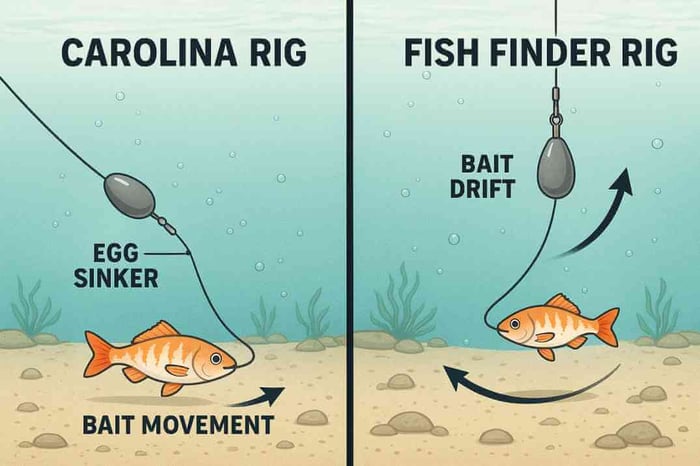
Though the Carolina rig works well in most places, the fish finder rig becomes the choice when you are drift fishing.
The sliding sinker rig allows the bait to move with greater freedom.
It allows the flounder time to feed before they sense the sinker weight.
It is among the favorite flounder rigs of boat anglers, as it covers a lot of water with the tide.
The rig seems uncomplicated.
You put on a sinker sleeve or fish finder clip on the line, then follow it with a snap swivel.
A leader is short, and a hook on the end carries the bait.
The variation from the Carolina rig is that the sinker glides better.
When a flounder strikes, the fish can swim away for an extra moment without interference. That usually equates to a more solid hook set.
Live minnows, finger mullet, and shrimp are most commonly used by anglers on this rig.
A steady current in inshore waters is the perfect place.
You can fish it along channel edges, grass flats, or drop-offs.
A drifting boat allows you to cover more water.
Additionally, this rig excels when the purpose is to locate active fish.
The fish finder rig is not used solely for chasing flounder.
It hooks striped bass and other bottom-dwellers that strike natural baits.
It is a staple in flounder fishing gear and is commonly pre-tied in tackle houses and sold that way.
Wherever you fish, whether in the Atlantic Ocean, Chesapeake Bay, or smaller estuaries, the fish finder rig places live bait in the jaws of ambush predators that hold near the bottom.
Float Rig for Shallow Waters
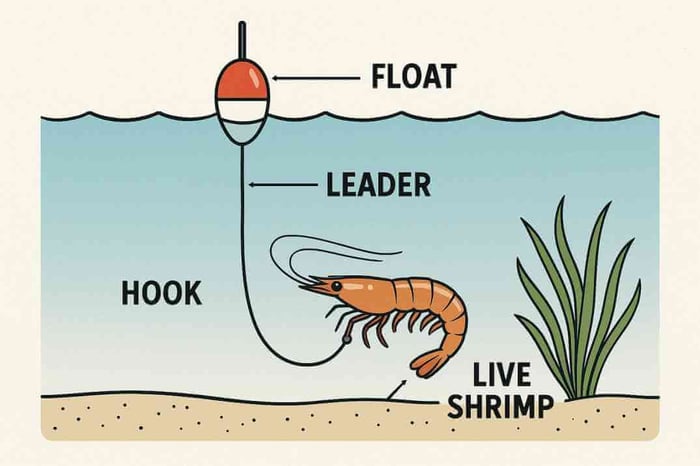
Now and then, flounder are holding in water just a few feet deep.
Grass flats, creek mouths, and shallow estuaries all yield fish.
In those areas, the float rig is a good idea.
It keeps bait in sight and away from snags, creating a small disturbance on top.
That noise and activity draw fish and provoke strikes.
The setup employs a popping float or cork on the leader.
Suspended beneath it is a leader with a live shrimp or mud minnow rigged cleanly under it.
A snap swivel and only enough weight to hold it at the desired depth keep the bait where you need it.
When you pop the cork, it splashes and clicks. That sound attracts attention and can ignite flounder bites when the water is crawling with bait.
This is a popular rig for novice anglers, as it is easy to set up and easy to spot.
Observe the cork. When it jumps, dips, or disappears, hook set.
Many anglers appreciate this type since they experience both the visual and the bite on the rod tip.
Float rigs are popular for surf fishing near shallow beaches and inshore fishing along the East Coast.
They excel in the summer months when shrimp are plentiful.
They will catch more fish in grass flats where flounder camouflage and ambush unsuspecting prey.
With quality bait fish and a well-placed cast, the float rig is among the finest flounder fishing tackle options for shallow water action.
Three-Way Rig for Strong Currents

When the tide is ripping, an ordinary Carolina rig or fish finder rig can't cope.
The bait is pushed too far, or the sinker drags without staying put.
That is where the three-way rig comes into play.
It is designed for high current and harsher conditions.
That's what makes it a good bet when floundering close to inlets, jetties, and channels in deeper water.
The setup is simple.
A three-way swivel ties the main line, a short dropper line with a sinker, and a leader with a hook attached together.
A bank sinker is the most common equipment used on the dropper by most anglers, as it provides a good grip on the bottom.
The bait swims on the leader just above the sinker, which maintains it in the strike zone even when hard water is pushing.
The sinker weight sits on the bottom, the swivel prevents twisting of the lines, and the bait stays alive.
This rig is particularly ideal for drift fishing over drop-offs or along rocky margins where flounder congregate.
Flounder anglers use it with live mullet, mud minnows, or live shrimp.
Waters inshore from the Chesapeake Bay to the Atlantic Ocean all experience flounder activity on this rig.
A significant benefit is that you can cast a longer leader without worrying about the bait getting tangled.
That freedom allows a live minnow to swim naturally and encourages fish to stay close to the bottom to feed.
Fluke fishing with this rig tends to catch more fish during outgoing tides.
The bait remains where flounder feed, near the bottom, where opportunistic feeders lurk.
New anglers tend to overuse too-heavy leaders.
But get this, flounder are not striped bass with jaw strength; they possess sharp teeth.
Light fluorocarbon is sufficient for most saltwater uses.
Use the leader in conjunction with a Kahle or circle hook, just enough weight to keep the bottom.
The three-way rig is a top alternative for fishing for flounder in strong currents.
It maintains natural bait within the preferred depth, stands up to tangles, and attracts solid flounder strikes.
For most anglers, it is the top choice for flounder once the water begins moving rapidly.
Hook Selection and Placement
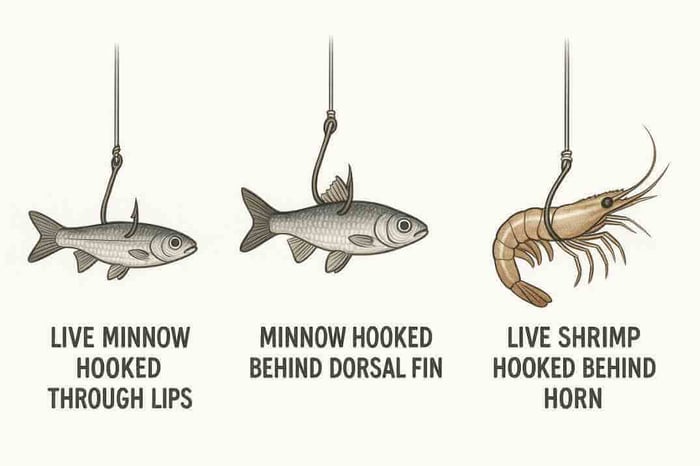
The hook might seem like a minor detail, but it makes or breaks your setup.
Flounder rigs for live bait only succeed when the hook is right for the bait and the fish.
Too large and the bait fish fights.
Too small and you'll lose sharp teeth or have a poor hook set.
Most fishermen pursuing flounder use Kahle or circle hooks.
A Kahle provides extra gap and holds a live mud minnow or mullet quite well.
A circle hook is commonly used in flounder fishing because it tends to catch the corner of the mouth.
That translates to more fish caught and fewer gut hooking incidents, which is particularly important when you prefer to release winter flounder or smaller fish.
Size varies with bait.
A small mud minnow or live shrimp catches fish on a 2/0 hook.
A large finger mullet or live eel will require a 4/0.
You are trying to keep the hook on without killing the bait.
Natural bait should remain alive if you're planning to catch fluke or other flatfish.
Placement is equally important.
Hooking a live minnow through the lips ensures it swims straight ahead and is suitable when drift fishing or slow trolling.
The dorsal fin causes the bait to kick more forcefully. This is how it "attracts" fish when flounder feed near the bottom.
Shrimp are hooked behind the horn so that they continue to snap and flick naturally.
Rookie anglers tend to hurry and shove hooks too far.
That kills the bait before it even gets to the strike zone.
Inshore fishermen who slow down to hook a clean catch catch more fish.
It's easy, really. A lively bait attracts flounder action. Dead bait just drags.
Tackle stores on the East Coast stock a variety of flounder tackle.
But honestly? Having the proper hook and clean presentation is more important than using a flashy rig.
Use a Carolina rig, fish finder rig, or even tandem rigs, but a well-hooked bait is what will entice fish. It's the key to making them bite.
Tips For Fishing Live Bait Rigs

One of the best tactics is drift fishing.
(1) A drifting boat covers ground and puts your live bait in front of more fish.
The fish finder rig, also known as a Carolina rig, is an excellent choice for use here.
Cast, allow the egg sinker to touch bottom, and then reel or allow the tide to take the bait slowly.
The rod tip should be bouncing as the sinker weight ticks down the sand.
When you sense a thump, let the fish alone for a moment.
Flounder tend to snatch the bait, hesitate, and then turn it in their mouth before swallowing.
Slowing down and sweeping steadily will usually hook them clean.
(2) When anchored, fan-casting is effective.
You cast in various directions around the boat and sweep the bait back across drop-offs or sandy channels.
This works well where you know flounder to feed, such as grass flats or jetty edges on an outgoing tide.
Most anglers will concur that hook-setting too early spooks more fish than any other factor.
Let the flounder strike and sense the weight on the line.
Then gradually ease into the hook set.
Flounder action feels mushy relative to striped bass or red drum, so be attuned.
Inshore anglers also insert small tricks.
A tandem rig with a jig head over a live minnow will pick up fluke and even striped bass on the same drift.
Some apply scent to natural bait.
Others adjust the sinker weight to mimic the current, allowing the bait to remain in the strike zone.
New anglers often believe more weight equates to greater control.
Actually, you only need enough weight to stay at the bottom.
Too much kills the action and makes the live bait appear unnatural.
Subtle movement is what lures flounder when fishing for them. So, hook them as slowly as you can. That's how you can catch them more certainly.
